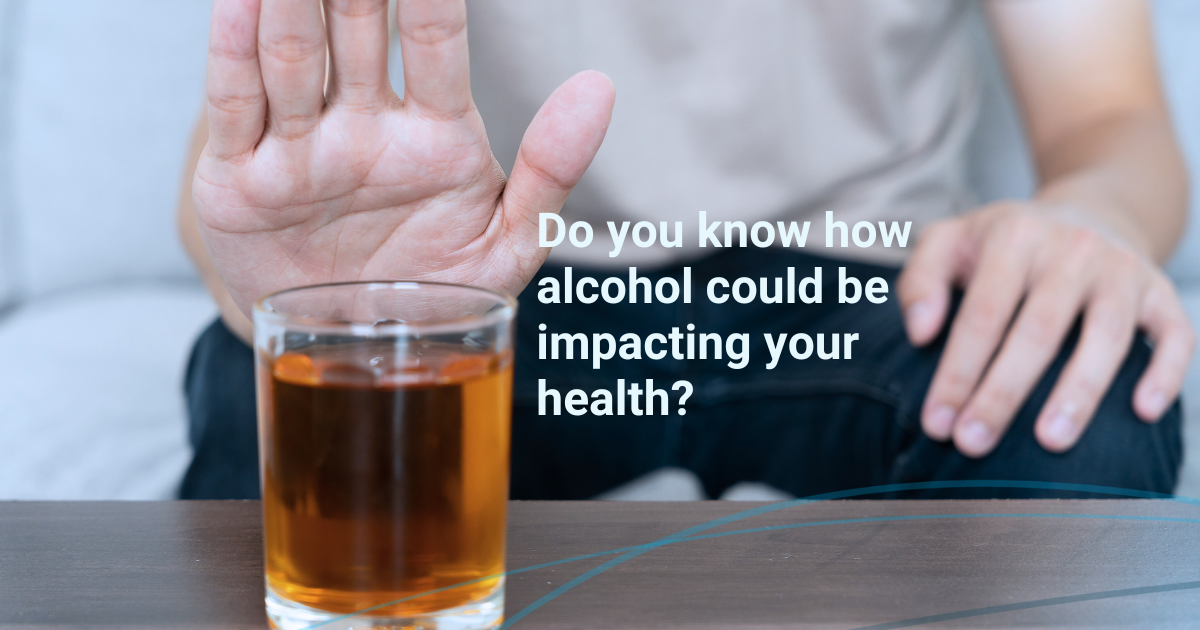
Jade holds a Bachelor of Public Health and has a passion for overall health and wellness. She is an Accredited Health and Wellness Coach
7 minute read
Drinking in rural Australia: challenges, culture and seeking help
What’s in this article
Risky alcohol consumption increases the further you get from a city, with statistics at their highest in remote and very remote areas. We explore this trend further and look at the challenges, culture and how to get help.

Research shows that people are more likely to drink at harmful levels and more frequently in regional and remote areas. According to the 2022-2023 National Drug Strategy Household Survey, risky alcohol consumption increases the further you get from a city, with statistics at their highest in remote and very remote areas.
High alcohol consumption can be linked to Australian culture, as pointed out in reports by the Australian Institute of Health and Welfare. But there are also other factors that are unique to rural and remote areas, that contribute to higher drinking levels.
While there is a need for more availability of services in rural and remote areas for the safe reduction of alcohol, understanding and giving compassion to the potential causes is important.
Unique challenges in rural and remote areas
Cultural and social attitudes towards heavy and frequent drinking can play a role. It could be that it is simply more normalised and accepted in certain areas. Growing up in an environment of a heavy drinking culture perpetuates the problem into the next generation. Young people in their twenties have been shown to be 9% more likely to drink at risky levels than those of the same age in cities.
There are also other contributing factors, such as higher unemployment and lower education levels in some rural and remote areas. For certain groups, like fly-in fly-out workers, other factors come into play. Like being separated from their families and usual support networks, long working hours and variable living conditions, which can all contribute to a strong drinking culture.
Historically, risky drinking behaviour can be common among rural farmers, which could be attributed to the stresses of climate challenges, financial problems and the subsequent increasing levels of depression and anxiety. Additionally, for some, long distances between properties and towns, and a limited variety of social activities to participate in can cause social isolation, which may also perpetuate heavy drinking culture.
Unfortunately, there is a lack of alcohol treatment services and availability of local GP services, which creates a barrier for people in rural and remote areas to seek help. There can also be a stigma around getting help for those who want it in small communities. The long travel times due to the distances to access treatment centres make it sometimes impossible to get the treatment that is needed.
There is a need for extended services to support people in rural and remote areas. There is however a new program, Clean Slate Clinic, which offers a telehealth service for those in rural and remote areas who want to reduce their alcohol consumption from home, safely. The service is currently available to residents of Western New South Wales, Western Queensland and Central and Eastern Sydney, and the program is hoping to expand to more areas.
GP services are also crucial to rural and remote areas for supporting the reduction of alcohol. For people wanting to reduce their alcohol intake, talking to a GP first is recommended.
Your doctor can give medical advice suited to your health, help you prepare for any withdrawal symptoms, create a withdrawal plan and potentially link you up with other services. If you are a heavy or regular drinker, it can be dangerous to reduce or stop drinking alcohol on your own. Done safely, reducing or quitting alcohol can offer a range of benefits to your health and life.
The negative impacts of harmful alcohol consumption
The negative impacts of harmful alcohol consumption on physical health, wellbeing and people’s broader life are far reaching.
Alcohol can damage your body and can contribute to mental illnesses. Long-term alcohol consumption contributes to more than 200 different types of diseases and injuries such as cancers, liver disease, cardiovascular disease, mental health conditions such as depression and anxiety, family breakdown, domestic and public violence, social dysfunction and more.
Short-term effects of alcohol include hangover, alcohol poisoning, accidents, risky behaviours, lowered inhibitions and conflict.
There is no safe level of alcohol consumption. Low level drinking is less risky than heavy drinking. The National Medical and Research Council (NHMRC) recommend drinking no more than four standard drinks in one day and no more than 10 standard drinks in a week. The less you choose to drink, the lower the risk of alcohol-related harm there is.
However, people who want to reduce or stop their alcohol intake if they are heavy or regular drinkers need to see their GP first, to ensure this is done safely.
What is a safe amount to drink?
Alcoholic beverages in Australia have labels indicating the level of pure alcohol. Sometimes this may be written in grams, or ‘standard drinks’. 1 standard drink is equal to 10g of alcohol, which is the amount an average and healthy adult will clear from their blood in 1 hour. If you are at a restaurant or a bar you can ask staff how many standard drinks is contained in your serving, or you can use an online calculator such as this one by NSW Health (https://yourroom.health.nsw.gov.au/games-and-tools/pages/standard-drink-calculator.aspx)
It is important to remember that some drinks are stronger than others, so the same amount of beverage can contain more or less than one standard drink. Even with the same type of beverage, e.g. beers, there are different strengths (and percentages of alcohol).
The Australian Guidelines recommend healthy adults should drink no more than 10 standard drinks a week. A standard drink contains about 10 grams of alcohol – the amount your body can process in one hour. You should also limit your drinking to no more than 4 standard drinks per day. Binge drinking can be as dangerous as long-term drinking.
And, a standard drink is smaller than you may think. Did you know the average glass of wine served in a pub contains 1.5 standard drinks?
Children under 18, and pregnant women should not drink alcohol. If breastfeeding, abstaining from alcohol is the safest for your baby.
Five easy tips to help you cut back
1. Catch up for coffee instead or do something active
Try catching up with friends at café for a coffee, tea, or non-alcoholic drink, rather than the pub. You can also catch up over a game of cricket, have a hit of tennis, go for a bushwalk, or visit the beach – get creative!
2. Look for substitutions
If you want to enjoy a refreshing drink while socialising, opt for one that is non-alcoholic. Have a glass of water in between each alcoholic drink. Always go for water when you need to quench your thirst. Remember, alcohol dehydrates you. You may also choose a drink with a low alcohol content or dilute spirits with extra mixer and ice.
3. Have alcohol-free days
Set yourself some alcohol-free days each week. At the start of the week, map out which days’ work best for you, and commit! Having three alcohol free days per week massively decreases risk of liver cancer.
4. Eat while you drink and sip slowly
Avoid making alcohol the focus of your time with friends and family. Enjoy a meal together rather than just going for a drink. This will slow your drinking pace. Sip your drinks slowly. Take time to talk, relax and catch up, and enjoy the company of those you are with. There is no rush to get back to the bar.
5. Set yourself a limit
Before going out, set yourself a limit on the number of standard drinks you’ll have. And remember what a standard drink is! Once you reach your limit, switch to non-alcoholic drinks. Make sure your limit is not that high that you forget or get caught up in the alcohol euphoria.
Benefits of drinking less alcohol
Learning the benefits of reducing your alcohol intake safely can help start the process of living a healthier life. There are many potential benefits to look forward to, including:
• Improvement in overall energy
• Improvement in sleep
• Improvement in mood
• Lowers your risk of long-term diseases such as cancer and heart disease
• Better performance at work
• Better relationships with your loved ones
• Saves you money
• Can aid in weight loss
For people wanting to reduce or stop drinking altogether, along with seeing your doctor and any other health professional support, gaining support from your friends and family is also important.
Cutting down your alcohol intake by yourself can be dangerous if you are a regular or heavy drinker so, please seek medical advice. Symptoms of alcohol withdrawal include nausea and vomiting, anxiety, sweating, headache, confusion and seizures so if you are a heavy drinker, reducing your alcohol intake is best done under the advice and monitoring of your rural health practitioner.
Growing up and living in a heavy and regular drinking culture, along with the lack of services and support needed for people to reduce alcohol consumption, can make it a difficult challenge to achieve this lifestyle change. You can call the National Alcohol and Other Drugs Hotline on 1800 250 015, 24 hours a day, for any questions, guidance and support, and to find out more about any treatment services available in your area.
Jade Newnham holds a Bachelor or Public Health and is an accredited health and wellness coach (with HCANZA) specialising in mental fitness. Jade is also a registered mindfulness, meditation and breath work teacher (with Meditation Association of Australia). Her work and educational background includes Public Health at state level and she is currently undergoing accreditation in Lifestyle Medicine.




